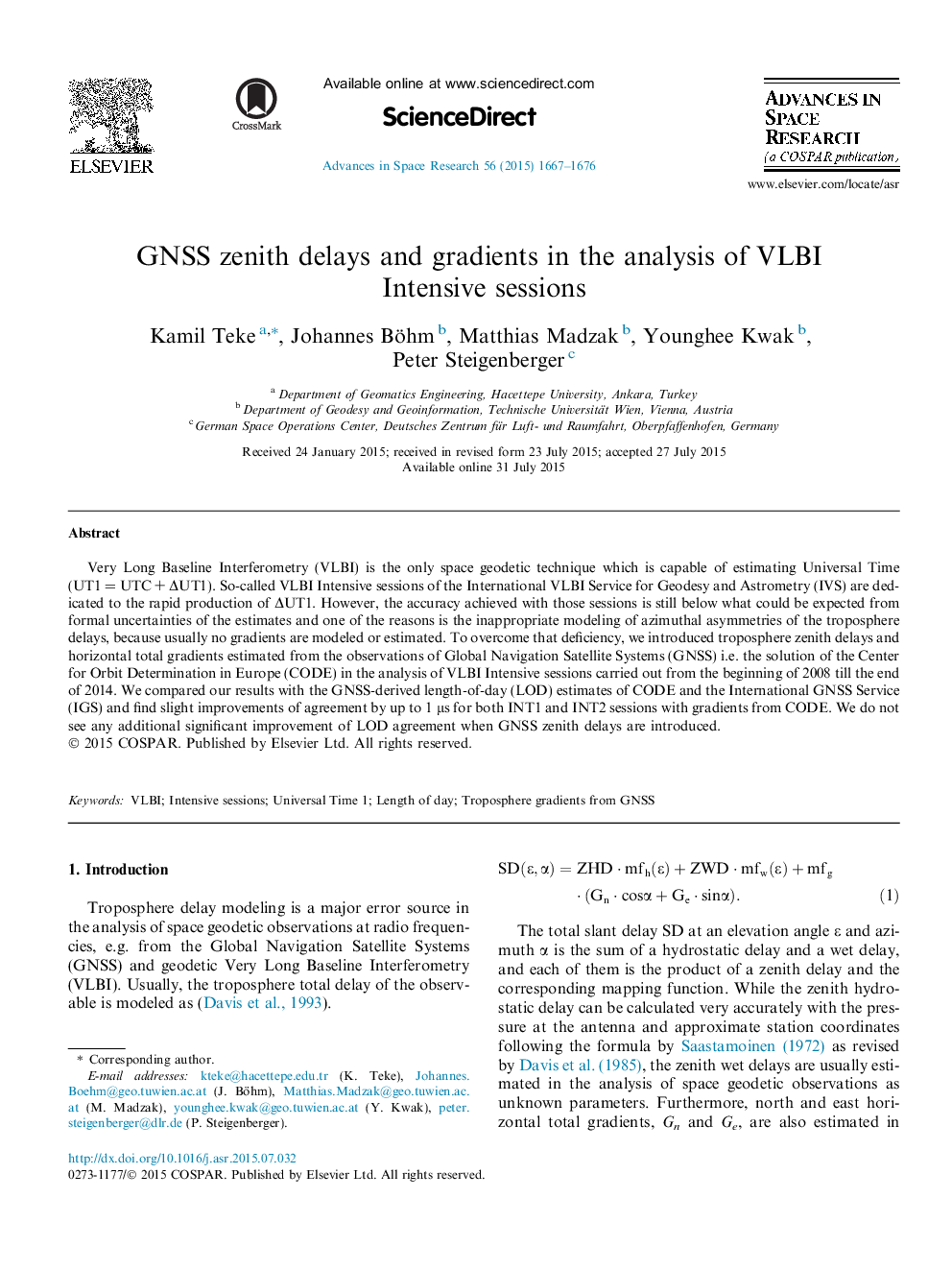| Article ID | Journal | Published Year | Pages | File Type |
|---|---|---|---|---|
| 1763450 | Advances in Space Research | 2015 | 10 Pages |
•Troposphere delays and gradients were estimated from GNSS.•GNSS troposphere delays were introduced in the analysis of VLBI Intensive sessions.•Improvement of length-of-day agreement was gained between VLBI Intensives and GNSS.
Very Long Baseline Interferometry (VLBI) is the only space geodetic technique which is capable of estimating Universal Time (UT1 = UTC + ΔUT1). So-called VLBI Intensive sessions of the International VLBI Service for Geodesy and Astrometry (IVS) are dedicated to the rapid production of ΔUT1. However, the accuracy achieved with those sessions is still below what could be expected from formal uncertainties of the estimates and one of the reasons is the inappropriate modeling of azimuthal asymmetries of the troposphere delays, because usually no gradients are modeled or estimated. To overcome that deficiency, we introduced troposphere zenith delays and horizontal total gradients estimated from the observations of Global Navigation Satellite Systems (GNSS) i.e. the solution of the Center for Orbit Determination in Europe (CODE) in the analysis of VLBI Intensive sessions carried out from the beginning of 2008 till the end of 2014. We compared our results with the GNSS-derived length-of-day (LOD) estimates of CODE and the International GNSS Service (IGS) and find slight improvements of agreement by up to 1 μs for both INT1 and INT2 sessions with gradients from CODE. We do not see any additional significant improvement of LOD agreement when GNSS zenith delays are introduced.
